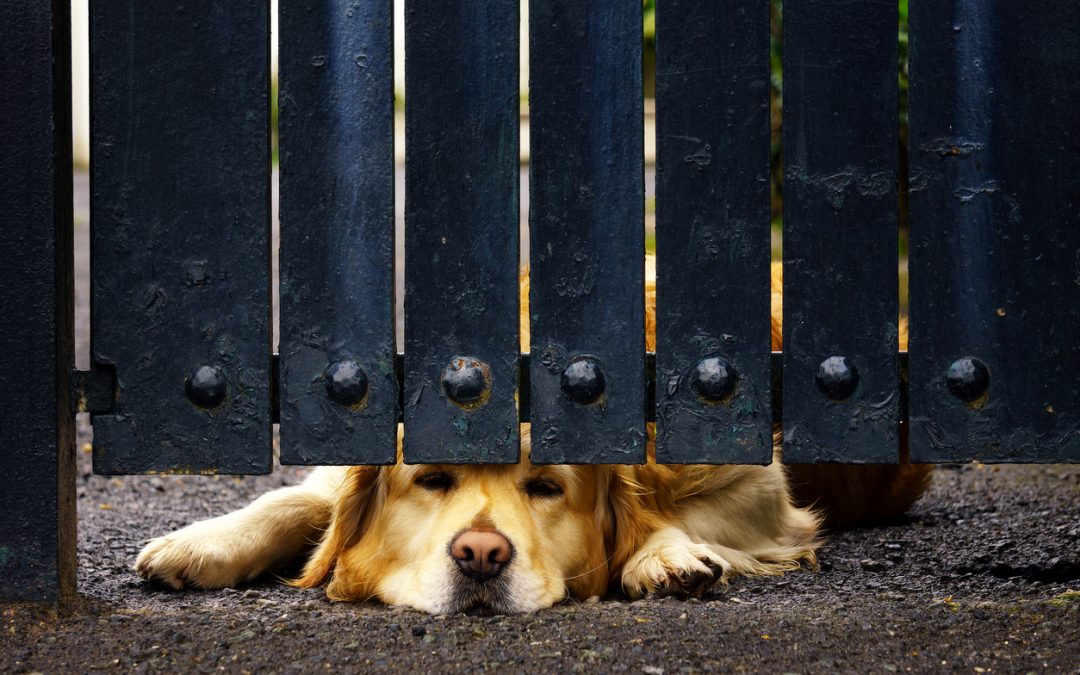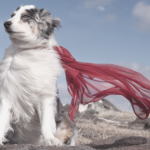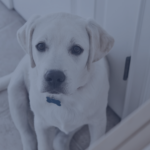As dog trainers, we love management—that is, arranging the dog’s environment to prevent mess-ups. It’s a godsend for a bunch of pesky behaviour issues. We use baby gates, dog-proof rooms, curtains, and crates to provide relief to our clients (and often, their dogs). Management can also protect shy or fearful dogs from experiences that they are not ready for, either as a permanent solution or temporarily during training.
But long-term management, no matter how alluring or easy it seems, nor how ‘humane’ it feels, is not always the answer.
In cases where a management-only solution impacts a dog’s quality of life, and where well-vetted, humane, and aversives-free behaviour modification options exist, we have a double duty as dog trainers. First, we must disclose to our clients that a training option exists, and that the training option will protect or even increase their dog’s quality of life. Second, if our clients then wish to train, we must be proficient at the techniques needed and offer them, or refer on to practitioners who are. Enrichment—an increasingly hot topic in both dog training circles and animal welfare more broadly—matters to us, our clients, and their dogs.
Example: Play Issues
Dogs are, in general, social creatures who enjoy the company of other dogs. Play (or simple companionship) with the conspecifics of their own choosing is profoundly enriching and important. Trainers dealt a steady diet of dogs who are fearful and aggressive towards other dogs sometimes forget how deep the pool is of socially normal dogs. But salience, of course, does not mean prevalence.
Many dogs who enjoy play also, and separately, have play-related behaviour issues. They might target and bully some dogs, or their play might frequently tip over into squabbles. Dog trainers skilled at using a well-planned combination of positive reinforcement on the one hand, and reducing problem behaviours through removal from play on the other, can generally resolve these cases over a number of weeks. In other words, the dogs stop bullying and scrapping, but get to keep playing. Although using a differential reinforcement protocol (for example, recalls out of play) may work for some of these cases, for many dogs the problem behaviour itself seems to be exceptionally self-reinforcing, and simply re-directing the dog fails to produce the desired outcomes.
Removal from play is a time-out—in other words, “negative punishment”. This label sounds distasteful but simply means making a good thing disappear. We have to leave the play session at some point anyways, so having “play ends” contingent on problem behaviour simply harnesses this pain-free, fear-free learning opportunity for the benefit of the dog. The dog learns that bullying results in loss of play opportunities, and they modify their behaviour accordingly. And like all aversives-free training, using removal from play as a consequence can even be considered enriching. We can compare this protocol to the puzzle toys that we are so quick to recommend to our clients. A dog might try pawing, but finds that doesn’t work to open a compartment. They might then try chewing, but that doesn’t work either. Finally, they try moving a lever with their nose, and out comes the food. The dog learns to get more of what they like from doing one behaviour (just as the dog learns that acceptable play gets them more play), and to avoid doing another behaviour because it clearly terminates what they want (similarly, bullying means play will end).
The Big Downside of Management-Only
The management-only solution for play issues (“no more dog park” or even “no more play”) radically decreases these dogs’ quality of life. These dogs enjoy play, and benefit tremendously from the opportunity to interact with other dogs. The very fact that these dogs will change their behaviour to avoid the consequence of removal from play is proof positive that they like play, and that they aren’t secretly trying to communicate a negative state like “over-stressed”. If they were over-stressed we could expect that bullying would increase with a time-out protocol, because the dog would be in a hurry to get away from the dog park and would learn that bullying brings relief. (And luckily for dogs, savvy trainers can usually pick up when a dog is stressed through their body language.)
A management-only solution may also cause new behaviour problems like barrier frustration (“reactivity”) on leash, due to deprivation. So if the play issue is left unaddressed, a social, enriched dog with a fixable problem can easily become a bored, destructive dog without playmates and without leash walks. We have all seen these dogs and felt for both the dogs and their owners too, who are very much at the end of their ropes. This is not an academic or theoretical outcome.
Get the Job Done
And it leads us to another, more serious, point. Dog owners may also find a management-only solution simply doesn’t meet their needs. They may themselves recognize the value of joyful dog play. If we do not offer them humane alternatives, they may (quite reasonably in their eyes) knock on the door of the local force trainer, who will certainly modify the dog’s behaviour. This trainer may do so with painful corrections and ‘negative reinforcement’, though, and will likely not disclose the well-documented side effects of training this way. Negative reinforcement may sound similar to negative punishment, but it is a whole world apart. It refers to making use of the relief an animal feels when something painful or scary ends. In dog training this typically means something truly awful like a long-duration electric shock.
There is a suite of behaviour problems that can seemingly be solved through management, but at great cost to the dog’s quality of life: play issues, aggressive guarding of chew items, and jumpy and mouthy dogs, to name a few. These solutions, which needlessly deny dogs things they enjoy due solely to practitioner preference, must eventually be taken off the table as an acceptable practice for dog trainers. We simply care too much about dogs’ quality of life to continue to prescribe needless emotional warehousing.
If you are ready to take your training to the next level and offer your clients a full complement of services, please consider applying to the Academy for Dog Trainers.
Cover photo iStock.com/mimadeo











